Setting Up Two-Factor Authentication with an Authenticator App
Our Mobile Banking app supports the use of authenticator applications such as Google Authenticator, Authy, or Duo. Below are instructions for how to set up two-factor authentication (2FA) for our Mobile Banking app. All of the applications noted above work for both Apple (iOS) and Google (Android) devices. Please note that 2FA must be set up through Internet Banking and cannot be enabled through our Mobile Banking app itself. Once set up though, you can use an authenticator application to log into Internet Banking or Mobile Banking.
We highly encourage you to switch to a 2FA application as your primary method of two-factor authenticator as it is the most secure method of authentication. If you have the opportunity to disable your email address as a 2FA authentication option, you should do so to further secure and protect your online access and HVCU accounts.
Step 1: Log into Internet Banking on your desktop computer.
Step 2: Click the drop down arrow on the top right side next to your name and select Settings.

Step 3: In Settings, click the Security tab.
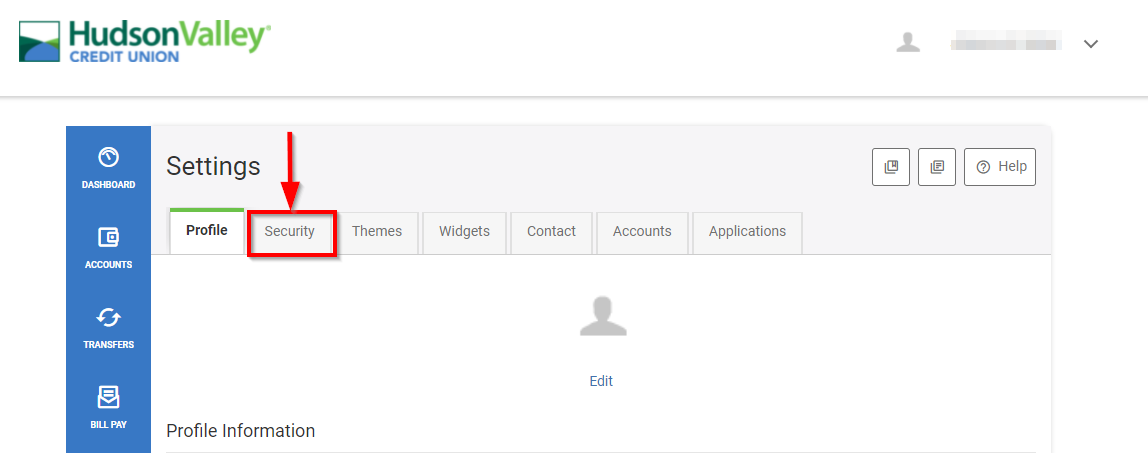
Step 4: Once in the Security tab, locate the Two-Factor Authentication section and click Edit (pencil icon) under the 2FA App option.
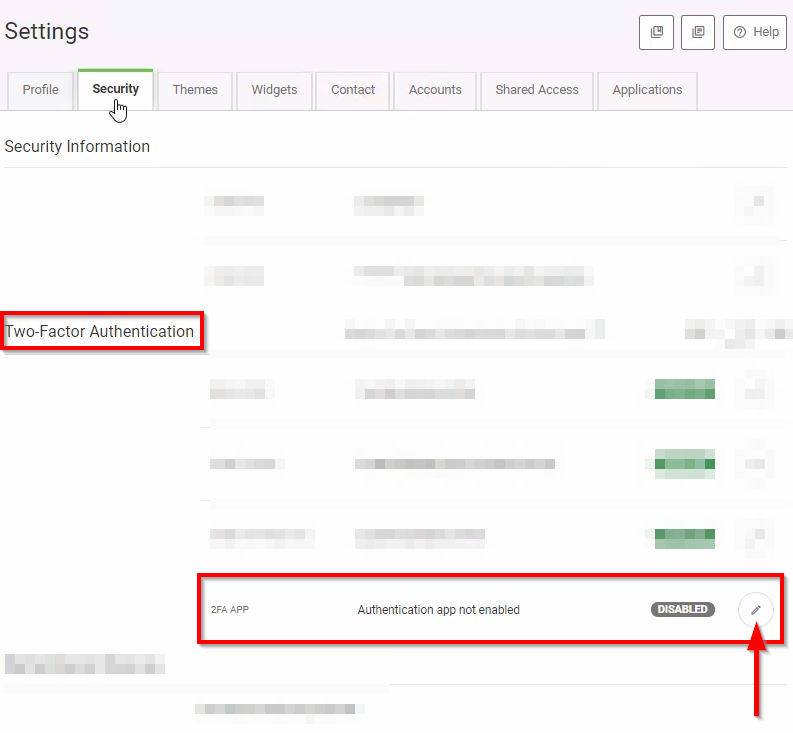
Step 5: After selecting Edit (pencil icon), click Enroll.

Step 6: Verify you have your preferred authenticator application installed on your phone (Google Authenticator, Authy, or Duo). Please see the links below for where to install the applications on iOS (Apple) or Android (Google) devices.
Google Authenticator (iOS)
Google Authenticator (Android)
Authy Authenticator (iOS)
Authy Authenticator (Android)
Duo Authenticator (iOS)
Duo Authenticator (Android)
Follow the instructions within the authenticator app to add the QR Code to your phone. Once completed, you will see a multi-digit code on your authenticator application for your HVCU account that refreshes on an interval for your security. Enter the code into the box noted below and click Next. Please see the guides below for how to add your two-factor code for each application. In the event your application scanner is not working, you can enter your code manually.
Google Authenticator Guide
Authy Authenticator Guide
Duo Authenticator Guide
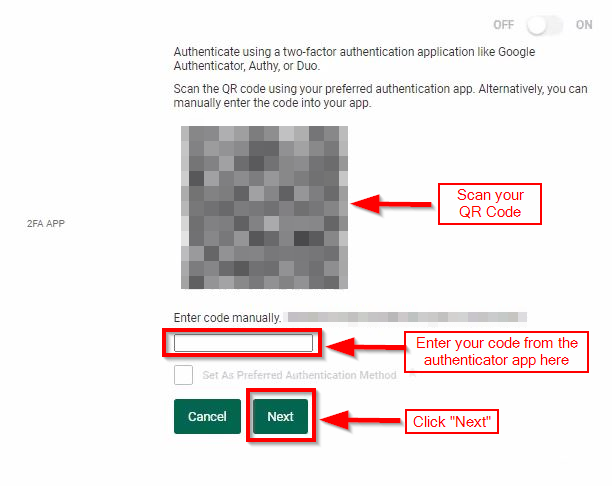
Step 7: Verify your identity using your preferred contact method , whether text, email, or phone call.
Click Send Code to receive a short code that will be used to confirm your identity.
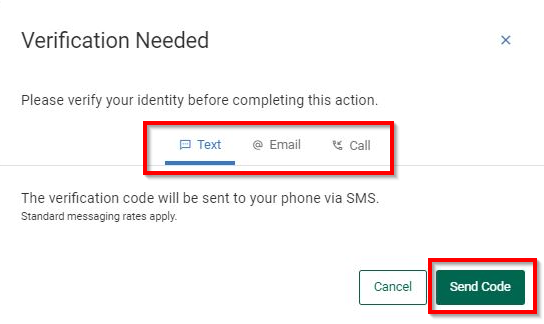
Step 8: After verifying your identity, confirm that the enablement switch is now flipped to On for 2FA App. We suggest you set your 2FA App as your preferred authenticator method to ensure your online account access is the most secure it can be. If you have email set up as an option for two-factor authentication, we highly recommend you also disable that option and utilize your 2FA App or SMS (text) messaging instead. Email authentication is not as secure as your 2FA App or SMS messaging.

Optional 2FA Steps
If you would like to disable other forms of two-factor authentication (e.g. email) from your online account access, follow the steps below after enabling your 2FA App:
1. From the two-factor authentication Settings area, click Edit (pencil icon) for the method you would like to disable.

2. Click the enablement switch to move the setting from On to Off.
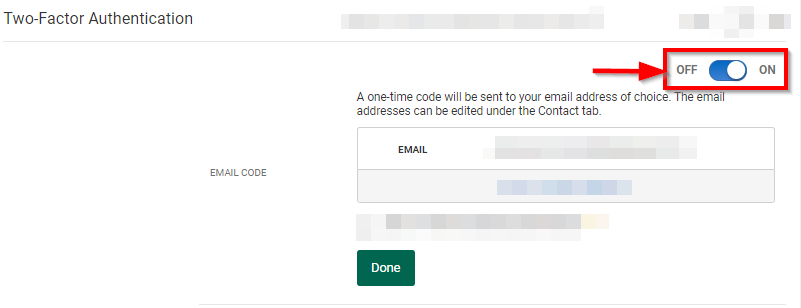
3. After flipping the switch, verify your identity using your preferred contact method. Click Send Code to receive a short code that will be used to confirm your identity.
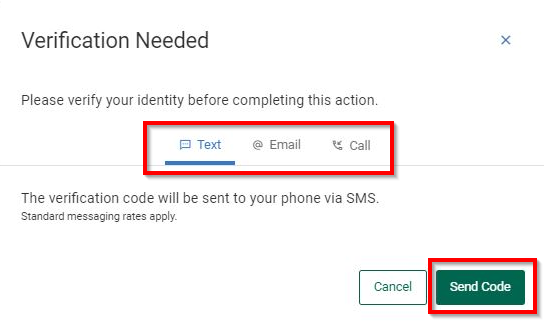
4. After confirming your identity, click Done and you are all set!
We Are Here To Help
Important Legal Disclosures & Information
All company names are the registered trademarks of their respective owners.



